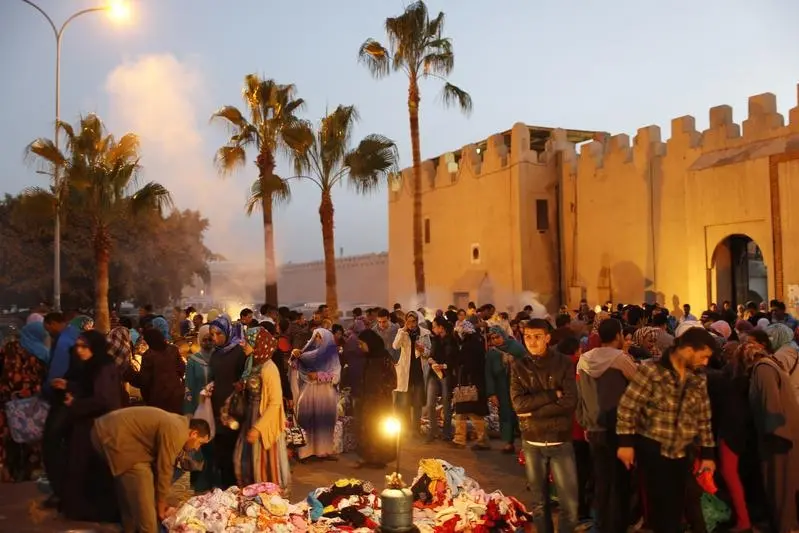PHOTO
(Adds context and details)
By Aziz El Yaakoubi
RABAT, Aug 8 (Reuters) - Morocco is considering widening the official bands for fluctuation of the dirham by around 5 percent in 2017, as a first phase in plans to introduce a flexible exchange rate system, two sources familiar with the process said.
Morocco has been working with a technical mission from the International Monetary Fund (IMF) during the second half of this year as part of introducing the currency move.
In a written response to Reuters, the central said that it was still working on reforms and declined to give any details.
But the sources said the central bank is expected to remove the currency basket weightings fully in a few years depending on market reactions. It wants to take advantage of higher reserves to push currency reforms and target inflation, the sources said.
The Moroccan dirham is mostly pegged to the euro, but as a step towards greater flexibility, in April last year the central bank reduced the euro weighting to 60 percent from 80 percent, and raised the U.S. dollar weighting to 40 percent from 20 percent.
The two sources familiar with the process said the central bank is now studying widening the bands for fluctuation of dirham by 2.5 percent each.
"The final decision has not been taken yet, it could be less or even more, but the focus is around 5 percent," one source said.
"It could be just 2 percent each as it has to be narrow enough to prevent big impact in case of brutal fluctuations," the second source said.
The drop in global oil prices helped revive public finances and reduce deficits in the Middle East region's biggest energy importer, giving the country more room to manoeuvre.
Morocco has already done more than most North African countries to make painful changes required by international lenders to curb its deficit, such as ending fuel subsidies and freezing public sector hiring. The government still controls the prices of wheat, sugar and cooking gas.
Morocco has announced it will also start targeting inflation in parallel with a more flexible currency exchange system, another reform planned by the country's central bank.
The IMF said in a report released earlier this month that it agreed with authorities "that the current situation is appropriate" to move toward a more flexible exchange rate and an inflation-targeting regime despite "risks in a global context of volatile financial conditions".
The central bank wants to take advantage of the comfortable level of the foreign reserve that reached unprecedented level in the last decade and launch the two reforms, the sources said.
Foreign exchange reserves stood at 243.64 billion dirhams ($24.8 billion) at the end of June, covering more than 7 months of import needs. The central bank, known as Bank al-Maghrib, expect the reserve to further improve to provide coverage of 7 months and 18 days of import needs at the end of 2016 and 8 months and 6 days at the end of 2017. ($1 = 9.8080 Moroccan dirham)
(Reporting by Aziz El Yaakoubi; Editing by Patrick Markey and Toby Chopra) ((pat.markey@thomsonreuters.com; +213-661-692993; Reuters Messaging: pat.markey.thomsonreuters.com@reuters.net))
Keywords: MOROCCO CURRENCY/












